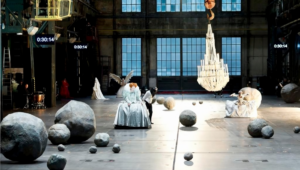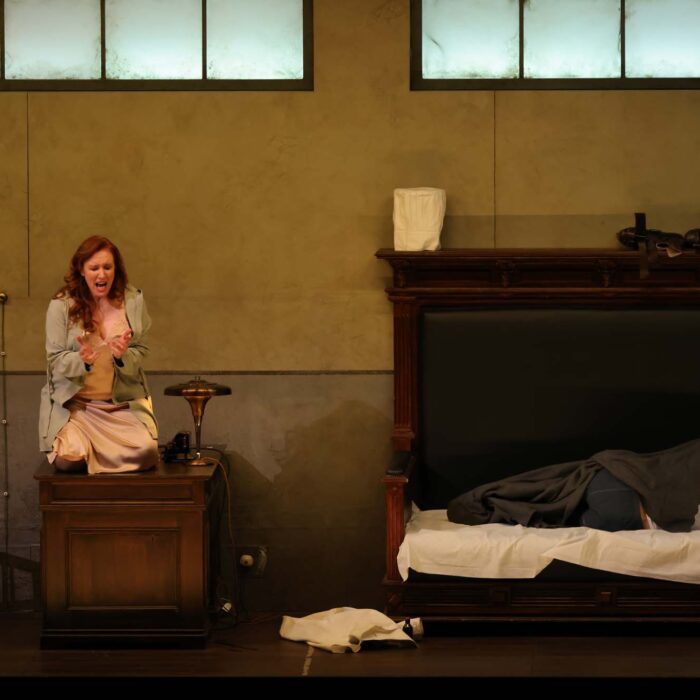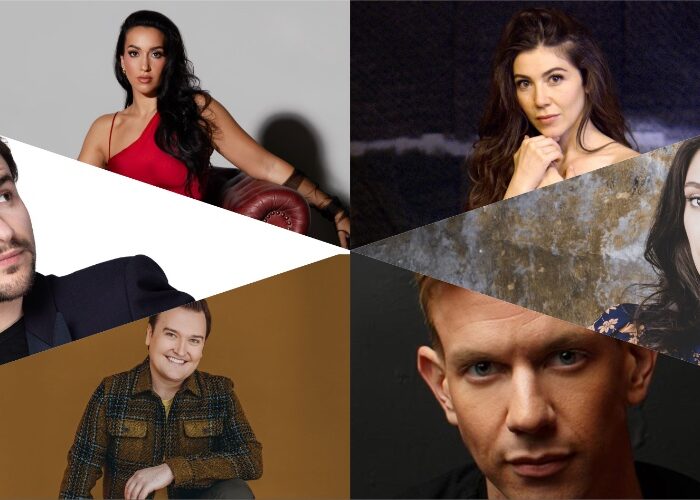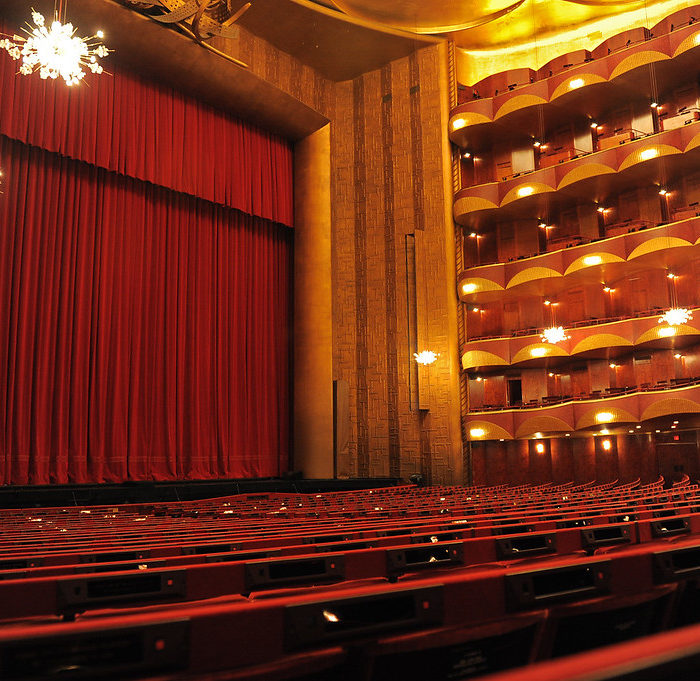
The Many Extremes of Opera in 5 Examples
By John Vandevert(Picture Credit @Wonge Bergmann)
What happens when opera is pushed to the far reaches of the socially acceptable, artistically expected, narratively conventional, and formally structured? You end up with controversial productions, reconstructed variations of well-known stories, and strange configurations of unknown ones.
One may remember what happened not so long ago with Stutgart’s “Sancta Susanna” or, longer ago, Adams’ “The Death of Klinghoffer,” or even longer ago, Nono’s “Intolleranza 1960.” At the heart of opera is line pushing, finding that precarious position between offensive and dissident to such an extant that the truth of unaddressed situations becomes observable in uncomfortable transparency. Throughout classical music’s history, and only until very recently, the audience was allowed to voice opposition to performances and publicly make their voice heard about what they thought. Nevertheless, operatic extremes have continued with and/or without public interventions, as in the case of 2023’s major event, the staunch and robust ridicule of the Gran Teatre del Liceu’s “Tosca.”
In this vein, let us explore five of the more extreme examples of opera where the borders of the traditional and the experimental merged, where sacred and profane were disregarded, where curation and novelty were mixed, and where the idea of opera was taken farther than it had ever been before. Of course, defining categories like these are hardly a neutral activity nor a new phenomenon, with everyone from Mozart and Wagner to Monteverdi and Cage doing some type. The point is that throughout operatic history you can find radical operas that are important to opera’s development and whose absence would have caused the artform’s life to look a lot different.
Richard Strauss: “Salome” (1905)
Making remarkable waves and causing wide-spread incredulity for its visceral display of human cruelty and immodest bloodlust, mixed with Christian narratives and female sexual deviance, Strauss’ third opera was one of the modernist three before his rapid return to late-Romanticism, the other two being “Elektra” and “Feuresnot.” At the opera’s premiere, star soprano Marie Wittich allegedly refused to do the controversial Dance of the Seven Veils, leading to the tradition where it is done by a dancer rather than the soprano. Its legacy is mired with censorship and banned concerts, from the Vienna ban in 1918, despite Mahler’s attempts, and its English ban under Charles Spencer, to its United States ban until 1937, when it was first performed at the Metropolitan in New York City. Nevertheless, it has become a staple in houses around the world, and productions continue to come from the work, Chicago Lyric Opera being set to give a presentation in 2026.
Mikhail Matyushkin: “Victory Over The Sun” (1913)
One of the many highlights of the pre-Soviet Futurist movement, one aspect of Russian pre-Soviet Modernism, the work pushed the line in many overlapping ways. Not only were Romantic notions of art rebelled against but the very notion of language itself. The opera famously used a contrived language called Zaum, a serious attempt by its creators to unearth the Slavic universal language by shedding the constructed nature of lingual representativeness for a more sound-based dynamic. Featuring Futurist geometric costumes and interactive sets by Suprematist Kazimir Malevich, Matyushkin set a new precedent for Russian opera, before the country’s Soviet turn, where the confines of tradition were able to be not only challenged but replaced with a desire for innovation. First premiered in 1913, the opera’s musical life was one of real avant-garde novelty, neither rooted in serialism nor melodicism but being a satirical parody of Romanticism itself.
Viktor Ullmann: “Der Kaiser von Atlantis” (1943)
Written during the early 1940s in the Theresienstadt ghetto in Terezín, Czechia (then Czechoslovakia), the four-scene opera was a real satirical thorn in the side of the Nazi regime, especially because the plot concerned a King’s desire to rule over nature and the natural order itself, including death. Greatly influenced by Schoenberg and Berg, upon being sent to the ghetto in 1942, Ullmann’s output did not stop even for a minute. Although being sent to the Auschwitz II-Birkenau in 1944, in only two years Ullmann wrote some of his best work. The opera was tentatively started in 1917, while Ullmann was in Vienna, but did not receive its first presentation until the mid-1970s. Musically, it takes from Lutheran choral music, late-Romanticism, Modernist serialism, and even 18th century, Germano-Baroque folk music. The opera can be understood as one type of ‘degenerate’ music under the Nazi regime, given the composer’s Jewish heritage and affinity for ‘decadent’ sensibilities.
György Ligeti: “La Grand Macabre” (1977)
An intricate network of allusions, languages, and quotations, on top of a complicated plot that oscillates between domination over fate and submission to death and finality, Ligeti’s only opera demonstrated the many developments and affordances of the new compositional world some called Second Modernism. After the Second World War, to create either Modernist or pre-Modernist music seemed strangely inappropriate, while many societal changes had arisen, from pre-war boundaries between ‘high’ and ‘low’ dissolving, scientificism dominating, and cynical disinterest in forced messaging leading to a desire for an escape into the familiar, innocent, and emotional. The collapse of history itself led to a synthesis of past and present, where everything was now up for use, through a far more self-aware condition but no less dominated by a desire for unity. Ligeti’s opera exemplified the post-post-modernist turn within composition, where all of music history was just as cannabilized but now became linked via the exploration of universal interests.
John Cage: “Europeras” (1987-1990)
Written, or created, near the very end of his life, this was Cage’s set of five operas, the first two being of an aleotoric (or indeterminate) quality while the final three were formally composed. What makes the five-part operatic set so notable is that the first two have neither a concrete form nor a predictable development. A performance of the two operas is comprised of a checkerboard stage of 64 spaces, 24 operatic scenes from 18th to 19th century European opera, 19 singers, and the entire work is governed by time, a common occurrence in many of Cage’s works like ‘“Water Music” and “ORGAN2/ASLSP.” By the late 1980s, compositional practices had expanded thanks, in part, to the work of Iannis Xenakis, although began earlier with Lejaren Hiller in the United States. Cage’s idea was that the European opera world was to reflect on itself, showing the relations through time as it developed and/or stayed the same.
Categories
Special Features

